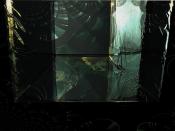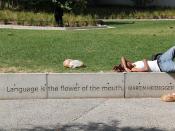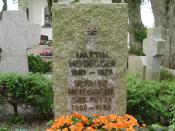In "Dr. Heidegger's Experiment," by Nathaniel Hawthorne, the magic book and dust are symbols that help illustrate Hawthorn's theme of how people should lock their past away and always work for the future. When the four guests drink the fountain of youth Dr. Heidegger is experimenting whether people have learned anything from their earlier years in life. Overall the reality of life will emerge and the choice of resisting or going with the flow will surface.
One symbol is the magic book, which is the item that holds the powerful memories of Dr. Hawthorne from being discovered. For example, the "massive silver clasps" secure the book from being opened by temptation. This book is very important to the Doctor and must contain his disappointing past. The massive silver clasps are meant to keep the id's desires locked away. In addition, the Doctor revealed part of his past to prove the fountain of youth's power by unlatching the sacred book and taking "from among its black-letter pages a rose" that "has been treasured between the leaves of this old volume."
The Doctor sees this book as a flower, referring to the pages as "leaves". The book's memories were let loose when the doctor gave the pages light allowing the childhood memories to bloom in the mind once again. The book is linked to Dr. Heidegger's mind and when the massive clasps are unlatched, the mind of the Doctor begins to experience the stimulating joys of youth that he cherishes, but knows he should not try and physically re-experience.
Another symbol is the dust that traps the sacred memories in the back of the mind. For example the "dim, old-fashioned chamber" has been "besprinkled with antique dust." Life has been settled down for a long time now as the...


